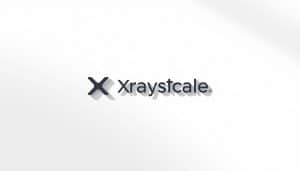Key Takeaways
- The Federal Reserve is looking into digital currency options. They want to keep their main jobs of managing money and keeping the financial system stable. This might lead to working with blockchain technologies like XRP.
- XRP uses Ripple’s payment system. It can move money in 3-5 seconds with low fees. This is much faster than traditional banks, which can take days.
- The Fed is looking into Central Bank Digital Currencies (CBDCs). They have four main goals. Keeping the dollar’s standing, making payments faster and easier, and keeping the financial system stable are some of these.
- Big banks like Bank of America and American Express have tested Ripple’s tech. This shows they see XRP’s value.
- The SEC sued Ripple over XRP. This is a big challenge for XRP working with the Federal Reserve. But, some court wins say XRP isn’t a security for retail buyers.
- XRP is different from other speculative cryptocurrencies. Its design focuses on being useful. This might match the Federal Reserve’s goals for improving financial systems. XRP could help connect different payment networks.
The Federal Reserve and XRP have caught a lot of attention. This is true in both financial and cryptocurrency circles. People are curious if Ripple’s XRP could be part of the U.S. central bank’s plans.
Understanding the link between the Federal Reserve and XRP is tricky. It involves knowing both old banking ways and blockchain tech. The Federal Reserve is slow to adopt new digital assets. But XRP is already used for sending money across borders.
This mix of old and new is very interesting. It shows how finance and tech are coming together.
Understanding the Federal Reserve and XRP
The Federal Reserve is America’s central bank. It helps with money rules and keeping the economy stable. XRP is a digital coin for fast cross-border transactions. People are very interested in how these two might work together.
The Federal Reserve watches over money and keeps the economy stable. It has 12 regional banks and makes big decisions that affect the world. Even though it’s old-fashioned, the Fed is now looking into new tech for payments.
XRP is made by Ripple Labs. It helps move money across borders quickly and cheaply. Its tech makes payments fast, unlike old banking ways. This makes XRP a good choice for the Fed to look at.
The meeting of the Federal Reserve and XRP shows a big change. The Fed is looking at digital money, and XRP is a good example. It shows how blockchain can make payments better.
Big banks around the world have tried Ripple’s tech. Some use it for real money work. The Fed seeing blockchain’s value means big changes in banking are coming.
The Federal Reserve’s Role in Digital Currency Evolution
The Federal Reserve is changing how banks work with digital money. They are looking at blockchain technologies and cryptocurrencies like XRP. They want to understand this new world better.
Central Bank Digital Currencies (CBDCs)
CBDCs are key for the Federal Reserve’s digital money plans. They are studying a digital dollar. This is their closest look at cryptocurrency ideas.
They look at digital assets like XRP for ideas. CBDCs want to keep the trust of regular money but use blockchain’s good parts. They aim to keep the dollar strong.
Their main goals are to keep the dollar strong, make payments quickly, keep the value of the dollar stable, and cut costs for foreign deals. Experts say XRP’s tech can help with making digital money work better.
Regulatory Framework for Cryptocurrencies
The Federal Reserve’s rules affect XRP and the whole crypto world. They work with the SEC and Treasury to make rules. These rules help keep things safe and fair.
They make clear rules for different digital assets. This could help XRP work in safe places. The Fed wants to keep things safe and stop bad things.
This makes it hard and easy for XRP at the same time. Ripple talks to the Fed to show XRP is good for money. The Fed’s rules on payments across borders matter a lot for XRP.
XRP: Overview and Technological Capabilities
XRP is a digital asset for payments and cross-border deals. It was made by Ripple Labs in 2012. It uses a special technology that makes it fast, cheap, and big compared to banks and other cryptocurrencies.
Ripple’s Payment Protocol
Ripple’s payment system is key to XRP’s role in finance. It runs on the XRP Ledger, a special ledger that works with peer-to-peer servers. It’s different from Bitcoin because it uses a special way to agree on transactions, not mining.
This way of agreeing on transactions makes Ripple fast. It can do transactions in 3-5 seconds. This is much faster than banks or other cryptocurrencies. It also lets users trade currencies directly, without needing middlemen.
Financial groups using Ripple can connect through RippleNet. It links banks, payment services, and digital exchanges. RippleNet has three main services. xCurrent is for quick payments. xRapid, now called On-Demand Liquidity, helps find liquidity with XRP. xVia is for sending money.
XRP’s Potential for Cross-Border Transactions
XRP is designed to fix problems with international money transfers. It could help the Federal Reserve with cross-border payments. It can send money across borders in seconds with very low fees.
It’s like a bridge for money, helping to exchange different currencies or other cryptocurrencies. This makes it easier for banks to manage money without keeping too much in one place. It could free up trillions of dollars stuck in accounts.
Many big banks have tested Ripple’s technology for sending money across borders. Banks like Bank of America and Santander have seen its value. This shows XRP is useful in the banking world.
The Federal Reserve is looking at digital currencies, and XRP is a good example. It shows how to make payments better. But, there are still legal issues, like the case with the SEC. Still, XRP’s tech shows it can help the Federal Reserve’s goals.
Speculation on Federal Reserve’s Interest in XRP
The Federal Reserve and XRP have sparked a lot of talk in the financial world and the crypto community. People are always watching for signs of a possible team-up between the U.S. central bank and Ripple’s digital coin.
Historical Interactions Between Ripple and the Fed
Ripple and the Federal Reserve have had a complicated relationship. They have talked indirectly but not directly. In 2019, Ripple leaders went to a Fed conference on bettering the U.S. payment system.
This was one of the first times they officially met. The Fed’s Faster Payments Task Force sees blockchain tech as a way to update payment systems. This includes XRP Ledger.
Some former Fed officials now work with Ripple. This has made people think the Fed might be interested in XRP’s tech. Even though there’s no official deal, the Fed has talked about Ripple’s payment solutions in research papers.
The Fed is also exploring blockchain tech in its innovation centers. This has led to guesses about XRP’s future, but the Fed has been careful with its words.
Ripple’s Financial Infrastructure Solutions
Ripple’s suite of financial infrastructure solutions addresses several pain points currently challenging the Federal Reserve’s Ripple has solutions for the Federal Reserve’s payment system problems. XRP is a bridge for fast cross-border payments. It helps banks save money by not needing to keep lots of foreign currency.
RippleNet offers three main products for banks:
- xCurrent: Helps banks make cross-border payments fast and track them easily, without using XRP.
- xRapid: Uses XRP to make international payments cheaper, saving 40-70% of costs.
- xVia: Makes it easy for businesses to send payments worldwide without extra software.
Big banks like Bank of America and Santander have tried Ripple’s tech. This shows they see its value. The Federal Reserve might also use Ripple’s digital payment tools.
Ripple’s Interledger Protocol helps different payment systems work together. This could help the Federal Reserve’s digital plans. But, there are still rules to figure out.
Regulatory Hurdles and Future Outlook
XRP has big challenges ahead because of rules and laws. These issues affect its chance to work with the Federal Reserve. They also impact how widely XRP can be used in finance.
These problems are key to figuring out XRP’s future. They help decide if XRP can help make cross-border payments better. And if it can team up with central banks.
SEC Lawsuit Implications
The SEC’s lawsuit against Ripple Labs is a big challenge for XRP. It was filed in December 2020. The SEC says Ripple made $1.3 billion without registering it as a security.
This lawsuit has made things unclear for XRP. It has affected how people use XRP and how banks see it. Some places stopped trading XRP, making it harder to use.
But Ripple has won some points in court. The court said XRP isn’t always a security for everyone. This could help clear up how XRP is seen by regulators.
The outcome of this lawsuit will set a big example. It will show how digital assets and banks work together. This will help decide if XRP can work with the Federal Reserve.
Potential Integration With Banking Systems
XRP might work with banks if tech and rules are right. The Federal Reserve is looking at faster payments. This could help XRP move money across borders fast.
Some banks have tested Ripple’s tech. They showed it can cut down on waiting times from days to seconds. XRP could help banks use their money better, freeing up billions.
XRP is not just about making money like some digital assets. It’s made to help banks work better. The Federal Reserve might see XRP as a way to improve money systems.
This makes XRP different from other digital assets. It’s seen as a tool to help banks, not just a way to make money. It could link different payment systems together.
This idea is different from other digital assets. XRP is seen as a tool to help banks, not just a way to make money. It could link different payment systems together.
Learn more about XRP and its role in the cryptocurrency market.
Conclusion
The Federal Reserve and XRP are changing finance together. They mix old banking ways with new blockchain tech. The Fed is looking at new payment systems, and XRP shows how to fix cross-border issues.
XRP faces challenges, like the SEC lawsuit. But its tech could help the Fed. It focuses on making finance better, not just making money.
This mix of old and new finance is growing. It’s important for everyone to watch. It could change how we use money in our global world.
Frequently Asked Questions
What is the relationship between the Federal Reserve and XRP?
The Federal Reserve is looking at digital solutions like XRP. They want to make payments better. But, they don’t have a direct partnership with XRP yet.
XRP helps with fast payments across borders. This matches the Fed’s goal to update the financial world. They are exploring how blockchain and traditional banking can work together.
How does XRP work as a bridge currency?
XRP helps change one currency to another quickly. It makes international payments fast and cheap. This is because it uses a special algorithm to check transactions.
It also makes it easier for banks to send money around the world. This is a big help for global payments.
Is the Federal Reserve developing its own digital currency?
Yes, the Federal Reserve is working on a digital currency. They want to keep the value of money stable. They also want to make payments faster and cheaper.
This new currency could help the dollar stay important worldwide. It’s all about making the financial system better.
What regulatory challenges does XRP face?
XRP is facing big problems with the law. The SEC says Ripple Labs did something wrong with XRP. This has made some places stop trading XRP.
But, there’s hope. A court said XRP might not be a security for regular people. This could help XRP’s future.
How could XRP benefit the Federal Reserve’s payment systems?
XRP could make payments faster and cheaper. It could also help free up money stuck in old systems. This would make the Fed’s job easier.
XRP’s technology is good for the Fed. It makes transactions clearer and safer. This is what the Fed wants for the future of money.
Have any financial institutions adopted Ripple’s XRP technology?
Yes, big banks around the world are using Ripple’s tech. Some use it without XRP, but others use XRP for payments. This shows XRP is useful in banking, even with legal issues.
Could XRP play a role in central bank digital currencies (CBDCs)?
XRP could help connect different digital currencies. It could make it easier for different countries to use their digital money. This would use XRP’s network to link different financial systems.
What happened in the SEC lawsuit against Ripple?
The SEC sued Ripple Labs in 2020. They said Ripple did something wrong with XRP. But, in 2023, a court said XRP might not be a security for everyone.
This is good news for Ripple. But, the case is still going on. We’ll see more about it later.
























 Bitcoin
Bitcoin  Ethereum
Ethereum  Tether
Tether  XRP
XRP  USDC
USDC  TRON
TRON  Lido Staked Ether
Lido Staked Ether  Dogecoin
Dogecoin  Figure Heloc
Figure Heloc  Cardano
Cardano  WhiteBIT Coin
WhiteBIT Coin  Bitcoin Cash
Bitcoin Cash  Wrapped stETH
Wrapped stETH  Wrapped Bitcoin
Wrapped Bitcoin  USDS
USDS  Binance Bridged USDT (BNB Smart Chain)
Binance Bridged USDT (BNB Smart Chain)  Wrapped eETH
Wrapped eETH  Chainlink
Chainlink  Monero
Monero  WETH
WETH  Stellar
Stellar  Zcash
Zcash  Ethena USDe
Ethena USDe  LEO Token
LEO Token  Coinbase Wrapped BTC
Coinbase Wrapped BTC  Hyperliquid
Hyperliquid  Litecoin
Litecoin  Sui
Sui  Avalanche
Avalanche  sUSDS
sUSDS  Hedera
Hedera  Dai
Dai  USDT0
USDT0  Shiba Inu
Shiba Inu  PayPal USD
PayPal USD  Mantle
Mantle  Toncoin
Toncoin  Cronos
Cronos  World Liberty Financial
World Liberty Financial  Ethena Staked USDe
Ethena Staked USDe  Uniswap
Uniswap  Polkadot
Polkadot  Canton
Canton  USD1
USD1  MemeCore
MemeCore  Aave
Aave  Rain
Rain  Bitget Token
Bitget Token